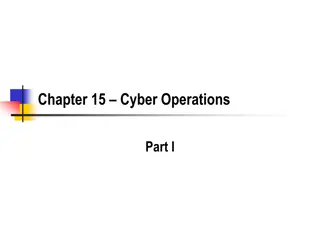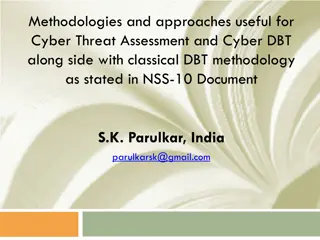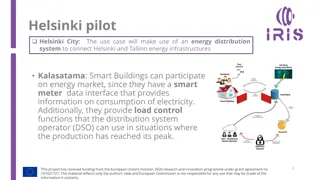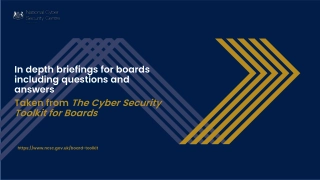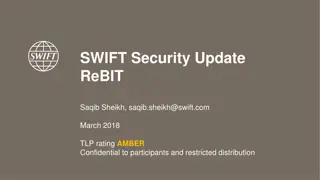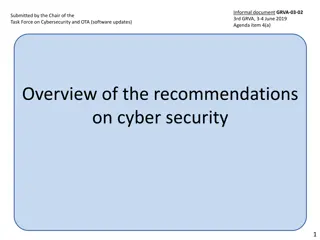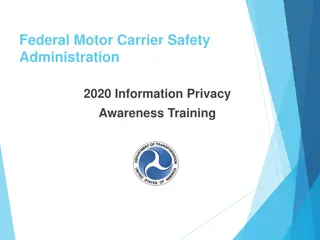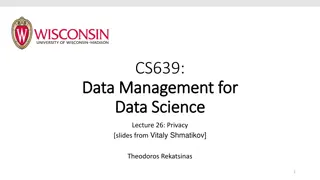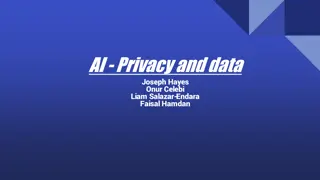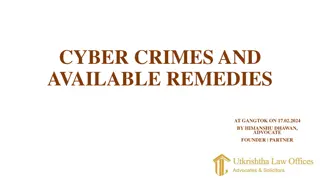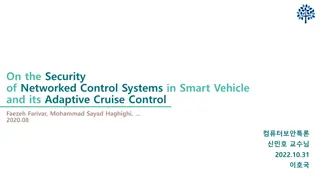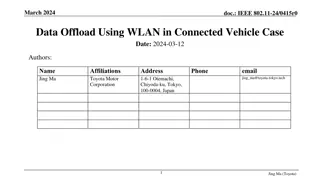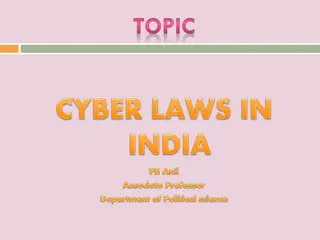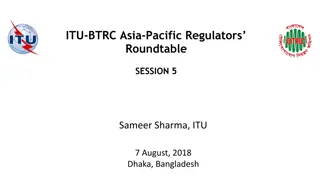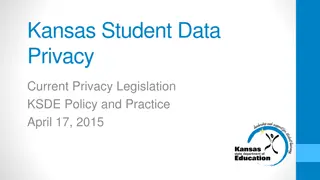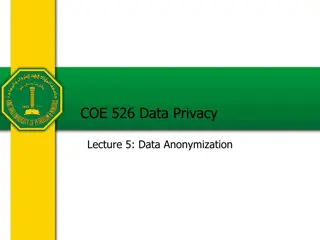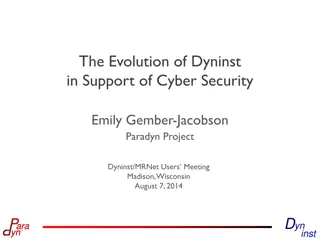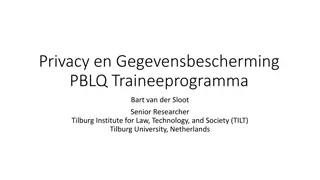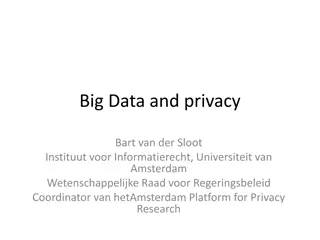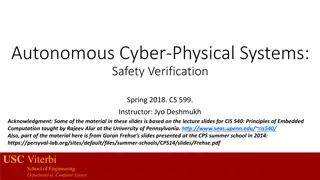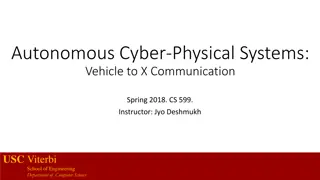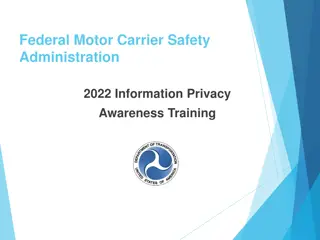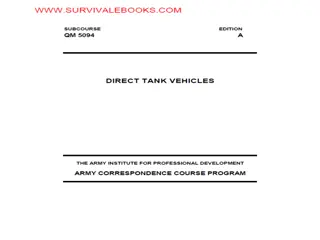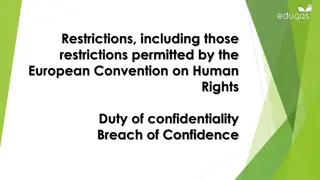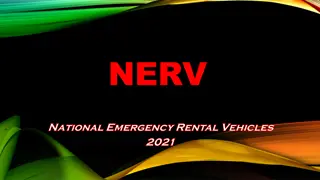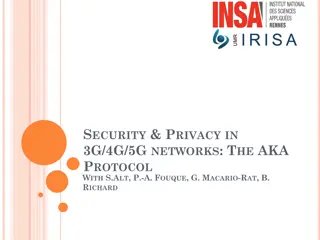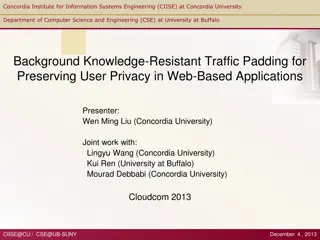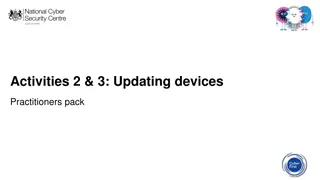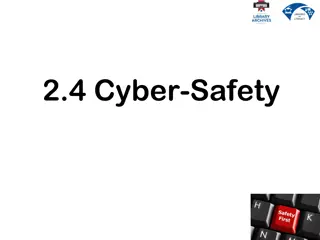Cyber Security and Data Privacy Recommendations in Autonomous Vehicles
The recommendations provided by the Subcommittee on Cyber Security and Data Privacy Advisory Council address key considerations such as definitions, data classification, security protocols, public-private partnerships, regulatory frameworks, and data collection, storage, and distribution in the context of autonomous vehicles (CAV). Key focus areas include aligning terminology, implementing security standards, leveraging industry expertise, protecting personally identifiable information, and establishing clear regulations for data usage and breach response.
Download Presentation

Please find below an Image/Link to download the presentation.
The content on the website is provided AS IS for your information and personal use only. It may not be sold, licensed, or shared on other websites without obtaining consent from the author. Download presentation by click this link. If you encounter any issues during the download, it is possible that the publisher has removed the file from their server.
E N D
Presentation Transcript
Subcommittee on Cyber Security and Data Privacy Advisory Council Recommendations Damien Riehl| Joshua Root mndot.gov
Considerations 1. DEFINITIONS The terms currently used in industry, statute, or rule may not align with how people or the law will interpret automated vehicles being driven without human operators. 2. CLASSIFICATION The Minnesota Data Practices Act s data-classification scheme will impact which CAV data is shared, how it could be shared, and with whom. The state will have to make private data anonymous and understand that this data has significant financial value. 3. UNIFORMITY Need uniform data storage, collection, and usage amongst industry, states, and world. 2
Considerations 4. SECURITY The sooner security protocols are determined, the cheaper they will be. A. Use security industry standards B. Trust and authenticate: Confirm who is providing the data sources and how trustworthy their data is C. Immutability and integrity: Avoiding unwanted challenges 5. PARTNERSHIPS Public-private partnerships will be key to leverage industry knowledge to benefit citizens and benefits without minimizing safety 3
Considerations 6. REGULATORY In CAV, the government s role can help foster new development, while protecting the public from risk. A. Address data breaches B. Look to existing standards C. Address how the government would respond in a breach and whether the public has a private right of action D. Public should have to opt in to allow the collection, use, or sale of their data E. Consumers must be informed F. Entities must disclose what data is being collected 7. COLLECTION, STORAGE & DISTRIBUTION OF DATA Start the process now to determine what data to collect, where it will be retained, and how it will be shared. 4
Recommendation 1A: Definition for Driver & Operator Define Driver & Operator. Legislature should define driver and operator so as address situations where human is not operating the automated vehicle. Consistent Definitions. Legislature should ensure driver and operator are used consistently among statutes, rules, and policies. 6
Recommendation 1B: Personally Identifiable Information Align with Federal Definition. The State needs to revise the definition of personally identifiable information (PII) to align with federal standards. Need PII Definition. The State s definition of PII needs to address what private information about a human is being shared and with whom the data is being shared. 7
Recommendation 1C: Definition for Private Data Expand Private Data Definition. Legislature should expand definition of private data as it relates to data the government collects about humans who travel in vehicles. Understand that the public might not be comfortable with governmental sharing of sensitive data (e.g., pinpoint geolocation, driving habits) that CAVs may collect and communicate. 8
Recommendation 2A: Data Anonymity, Summary & Value Anonymization, aggregation & value. The Minnesota Data Practices Act should be updated to: make private data anonymous; Summarize (or aggregate ) data so that personal information is not identifiable; and Understand that this data has significant financial value. 10
Recommendation 2B: Public-Private Partnerships & Uniformity Partnerships to Collect Data. The State should look into public-private partnership (P3) opportunities with industry regarding government- collected CAV data. These P3s should balance potential privacy challenges (or the appearance of privacy challenges). Uniformity & Simplicity. The Legislature should clarify or set policies around data that would help create both a uniform roadway user experience and simplify data. 11
Recommendation 3: Uniformity with Other States Uniformity. Minnesota should adopt other state, federal, and international best practices, while also considering our state-specific needs, for uniform data storage, collection, and use. 13
Recommendation 4A: Security by Design Security Protocols are Critical. The Legislature must understand that the single most important element of CAV are their security protocols. Security by Design. The Legislature and developers must emphasize security by design. Security is best thought about and integrated early in design, not afterwards. Partnering for Standardization. The State should avoid choosing a specific technology (e.g. Betamax vs. VHS). Instead the State should partnerwith industry around common security standards. 15
Recommendation 4B: Security Standards, Trust & Integrity Early Integration Saves Costs. The State should integrate security in design earlier in order to save costs. The sooner security protocols are determined, the cheaper they will be. Allow for Changing Technology. The State should invest in security systems that allow for changes in technology. Use industry standards for trust and integrity. In designing security systems, the State should: Use industry standards for security and electronics Ensure we can trust creators of the data (e.g. confirm who you are) Ensure the data is kept safe and is unchanged. 16
Recommendation 5A: Partnerships to Engage Public & Increase Safety Partnerships to Advance Safety Benefits. The State should partner with private industry to: increase the availability of CAV benefits to citizens and businesses, which also addresses equity work; and further enforce Minnesota s obligations to maintain safety standards. Partnership Incentives. The State s policies should incentivize public- private partnerships. Understand that while State standards are minimum requirements, industry should be able to do more as long as they adhere to these minimum requirements. 18
Recommendation 5B: Public Data & Mapping Construction & Operations. Understand that the State has a role in reporting what is being done on roads (e.g., construction, detours), which could impact CAV performance. Infrastructure Capacity. Understand that certain roads may have higher or lower CAV-capability, e.g. gravel roads vs. paved roads with connected signals. Mapping Data. The State must recognize that mapping data (e.g., streets, lanes, potholes) may have a variety of sources from government, industry, and private individuals. Staffing & Funding. The State should staff and fund a system that assesses the reliability of map data and its sources. Research. Additional research and partnering is required to define the State s role. 19
Recommendation 6A: Data Breaches & Existing Standards Look to existing standards. Minnesota should look to existing state and international standards to clarify its data breach standards to provide more certainty for business sectors. Government breach response. The Legislature should make it more clear how the government would respond in a breach situation. Private Right of Action. The Legislature should make it more clear whether consumers have a public right of action in breach situations instead of allowing this issue to be litigated in courts. 21
Recommendation 6B: Consumer Protection Consumer information. The State should update the Minnesota Consumer Protection Act (MCPA) to enhance requirements for consumer notice and protection. Disclosure. The Legislature should require government and private data collectors to disclose what data the CAV is collecting about people, and why the data is being collected (e.g., traffic flow, road conditions, safety, emissions). Opt-in. The Legislature should require consumers to opt-in if they want their data shared to help consumers chose what data they are willing to share, and with whom. Opt-in should be required for: collection (likely by OEMs), use (likely both OEMs and trusted suppliers), and sale (controlling who may buy data about people). Fairness. The Legislature should prohibit service from being degraded if consumers choose not to share their data. 22
Recommendation 7: Storing, Managing & Collecting Data Collection. The Legislature should first identify: 1. what data government needs 2. for how long, and 3. what triggers destroying records/data. Storage, format, and necessity. The Legislature should identify 1. how to store data, 2. where to store it, and 3. whether to collect/store it at all. Distribution. The Legislature should clarify who has access to data. 24
Thank you! Damien Riehl Josh Root Aaron Call Bill Leifheit Craig Gustafson 26






